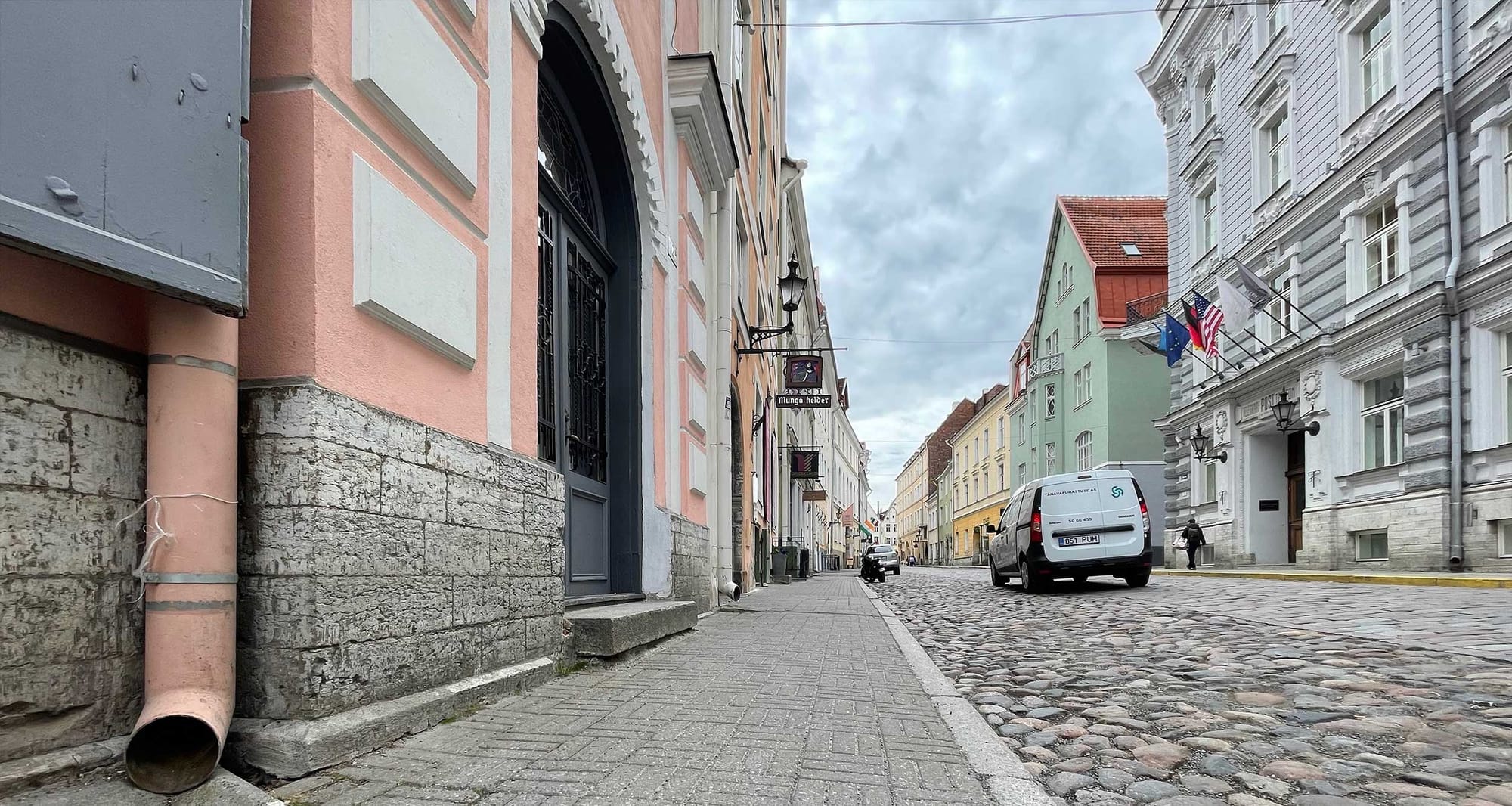
There are two sides to the coin of accessibility in Tallinn, Estonia. Tallinn an incredibly compact city, with the majority of tourist attractions located within a space of less than one square mile. The city’s small size makes it easy for nondisabled travelers to navigate, but its cobblestone streets, oftentimes narrow sidewalks, and elevation changes present significant challenges for wheelchair users.
Cobblestone pavements
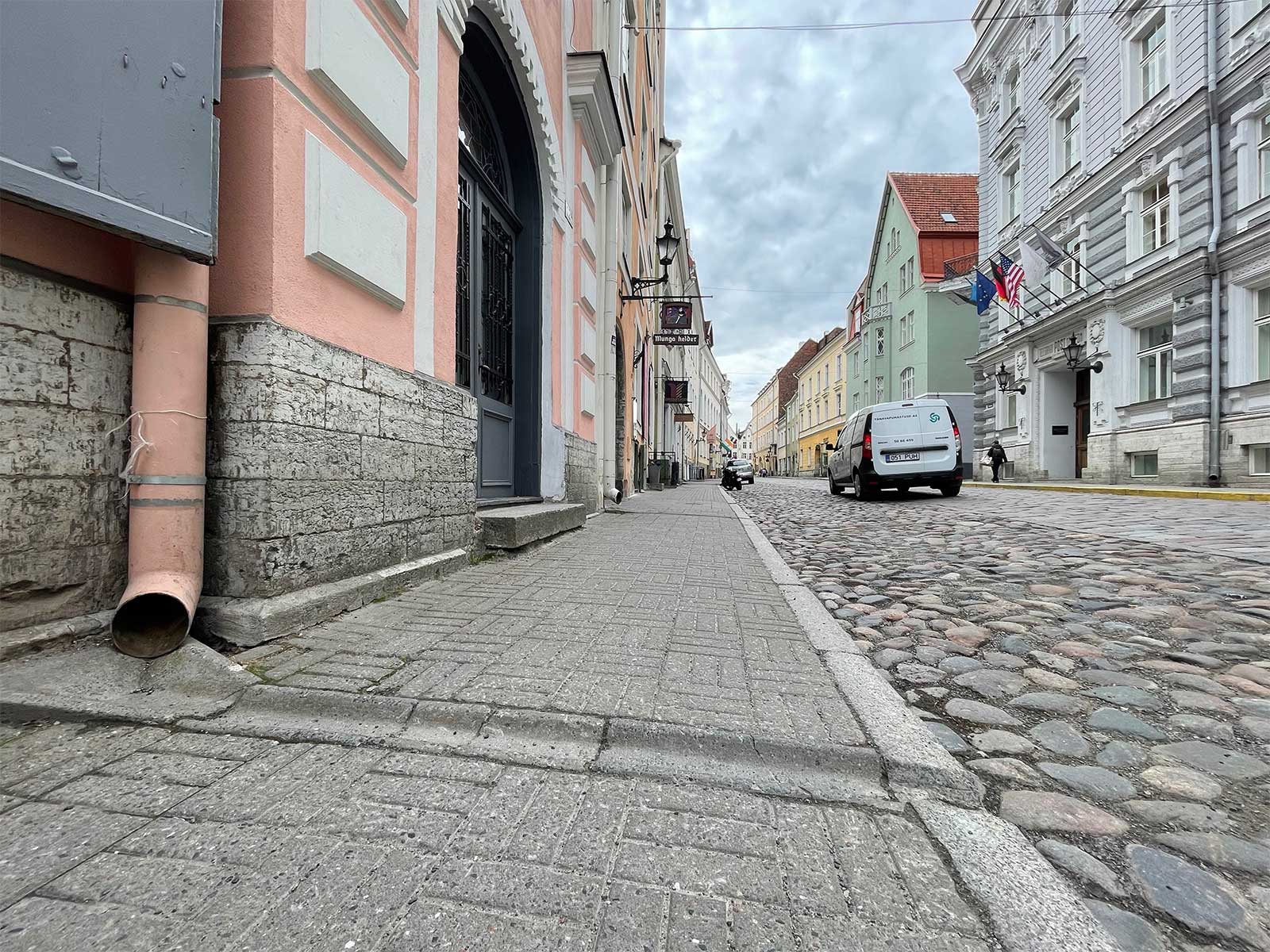
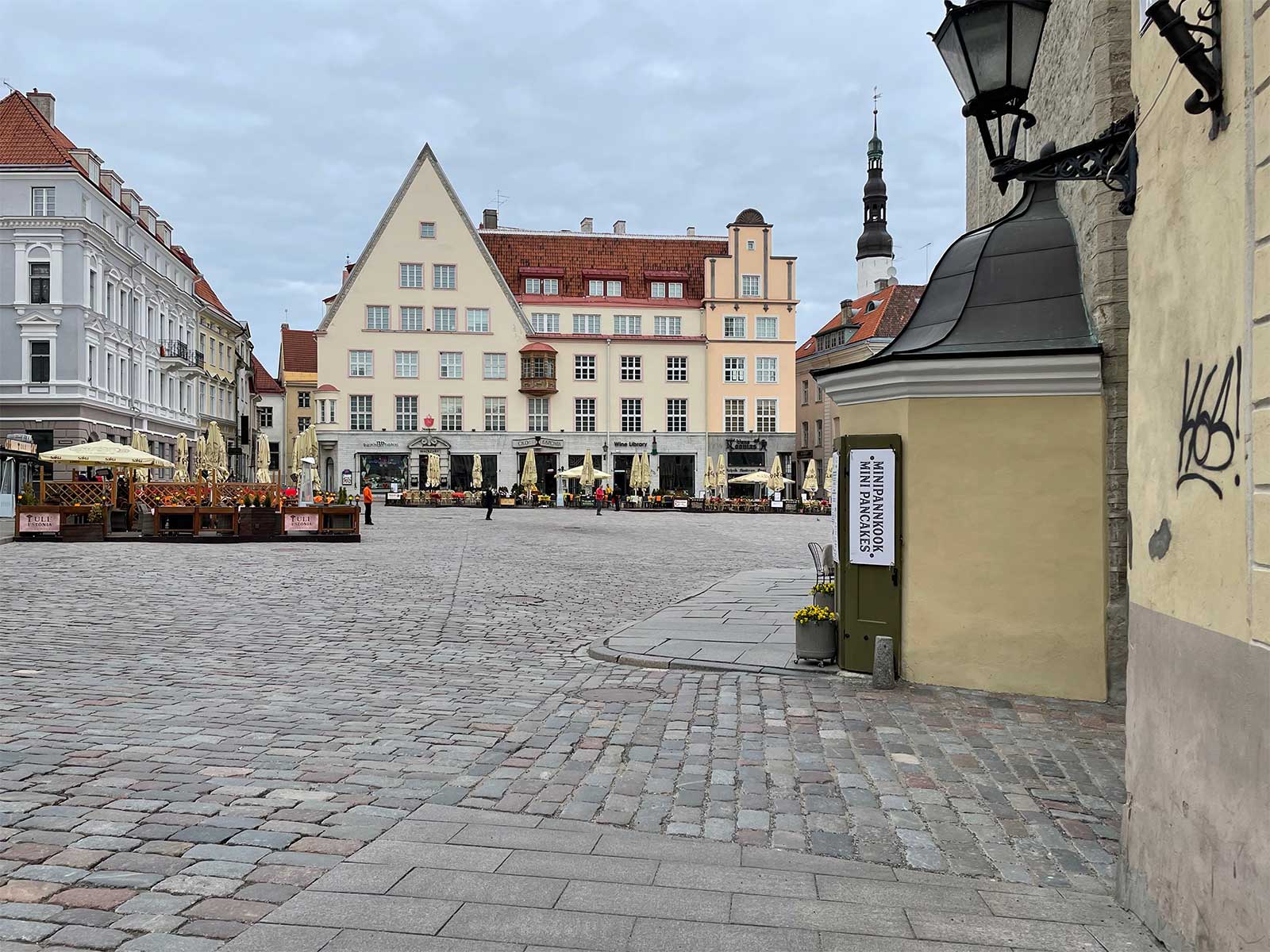
Cobblestones are in widespread use on the streets, sidewalks and public squares across Tallinn’s Old Town, a UNESCO World Heritage Site. Wheelchair users will face a bumpy ride, as cobbled streets and sidewalks are around (almost) every corner.
Some sidewalks, though paved with smoother stones, are regularly interrupted by water drains just wide and deep enough to have a substantial impact on your roll. They are essentially unavoidable potholes that appear every 20 or so feet.
Narrow sidewalks
Although many cobblestone streets have sidewalks wide enough to accommodate a power wheelchair, others do not. Some sidewalks are too narrow for wheelchairs or have other barriers that make them inaccessible.
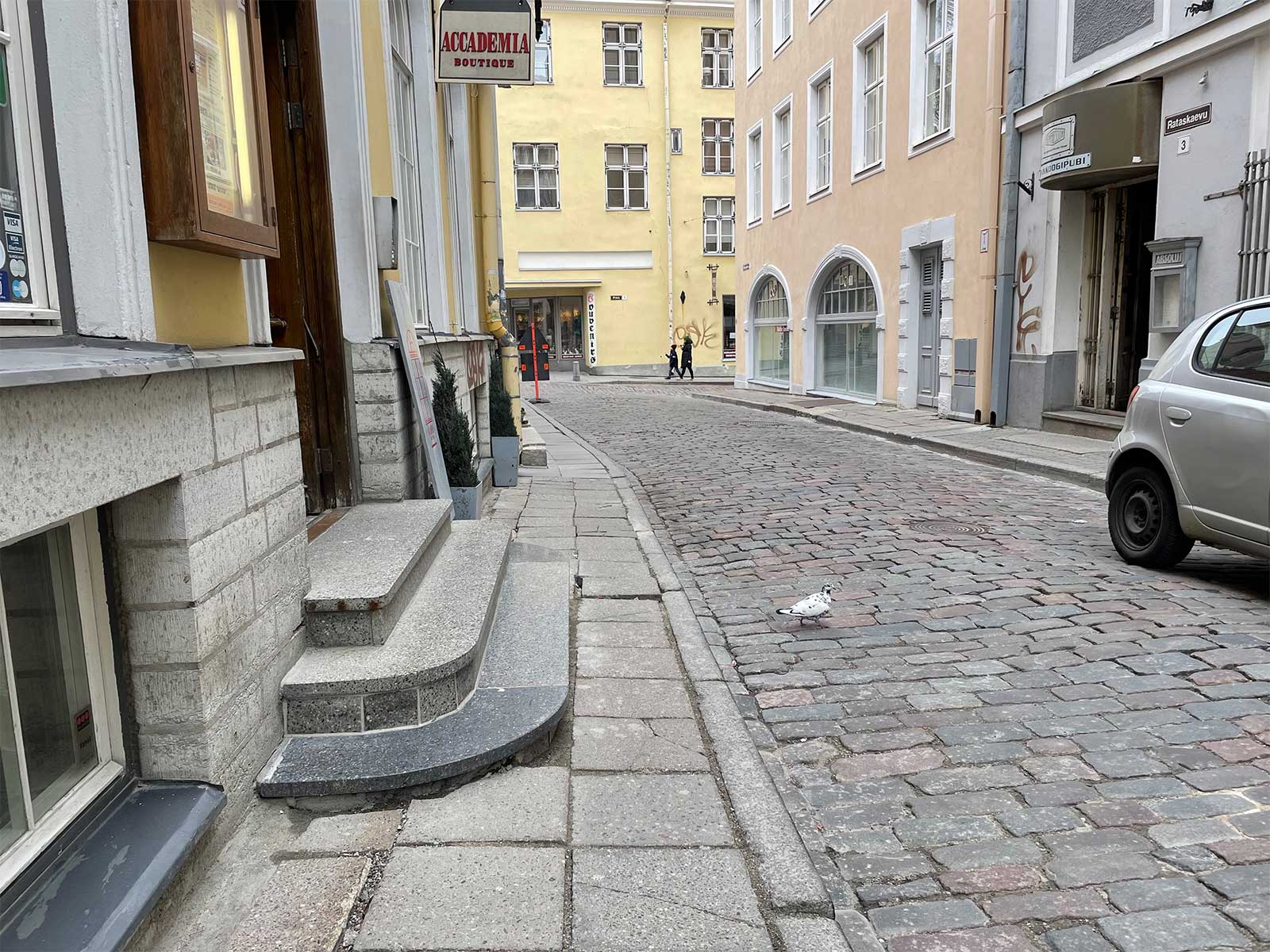
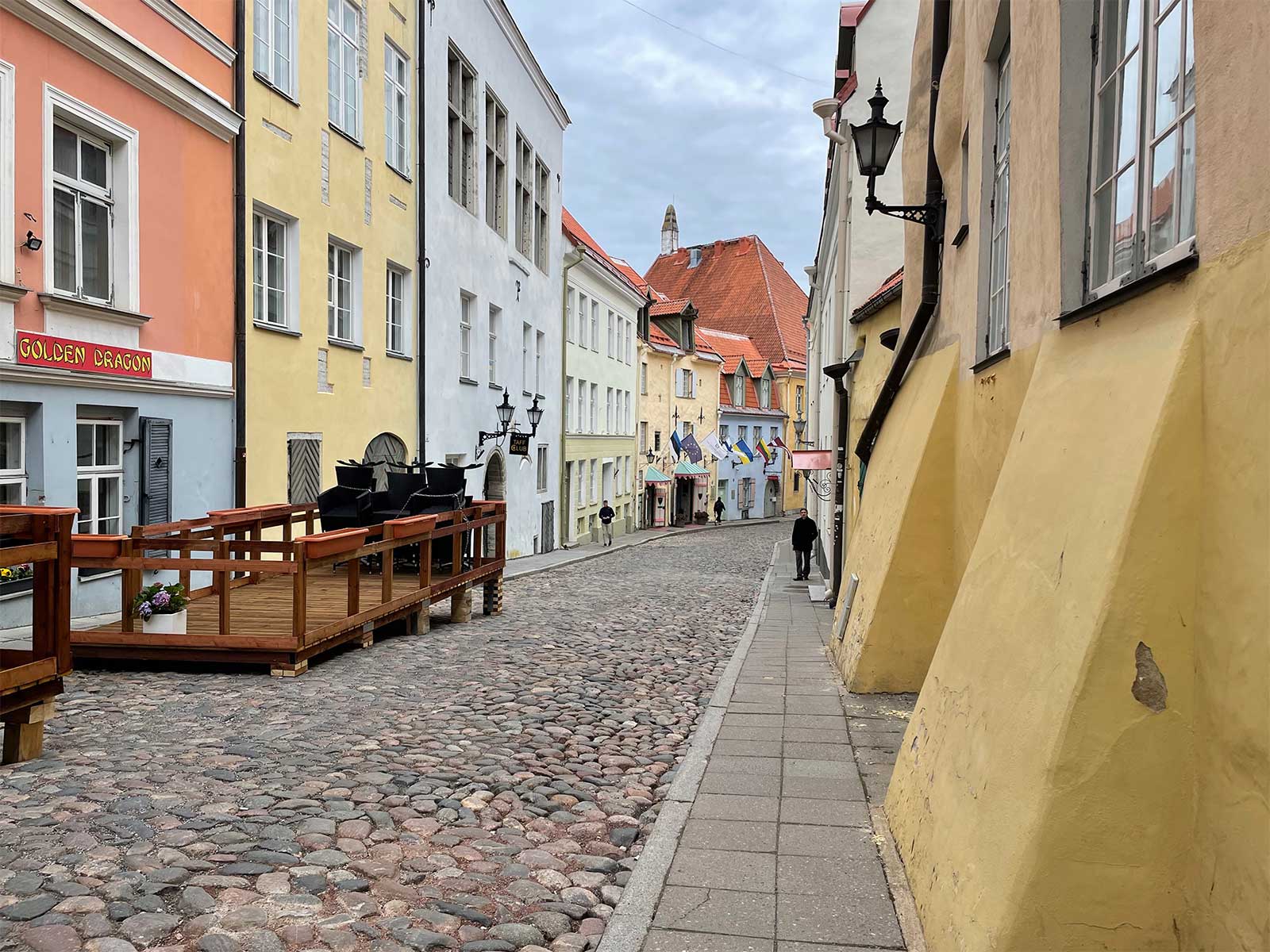
The first photo above depicts a street with rough cobblestones — its narrow sidewalk is blocked by three steps leading to a building’s entrance. The steps serve as a barrier to wheelchair users, making the sidewalk impassable for anyone using a power wheelchair.
Elevation changes and impassable passageways
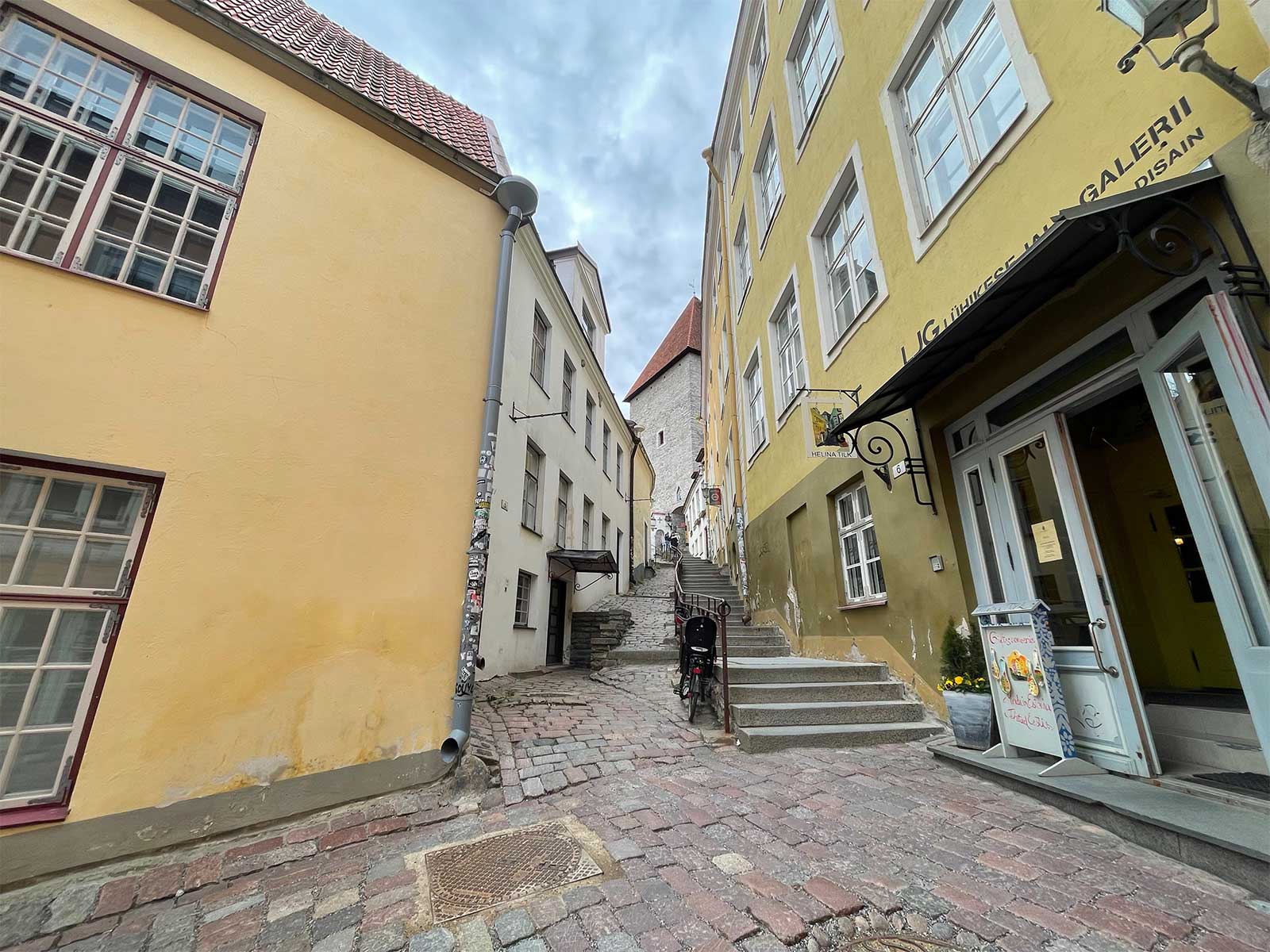
Tallinn is a hilly city, with significant elevation changes along the edges of the Old Town. Some passageways are not at all wheelchair-friendly, such as the one pictured above. At first look, it appears there is a steep ramp alongside a staircase, however there are multiple steps along the course of the “ramped” area.
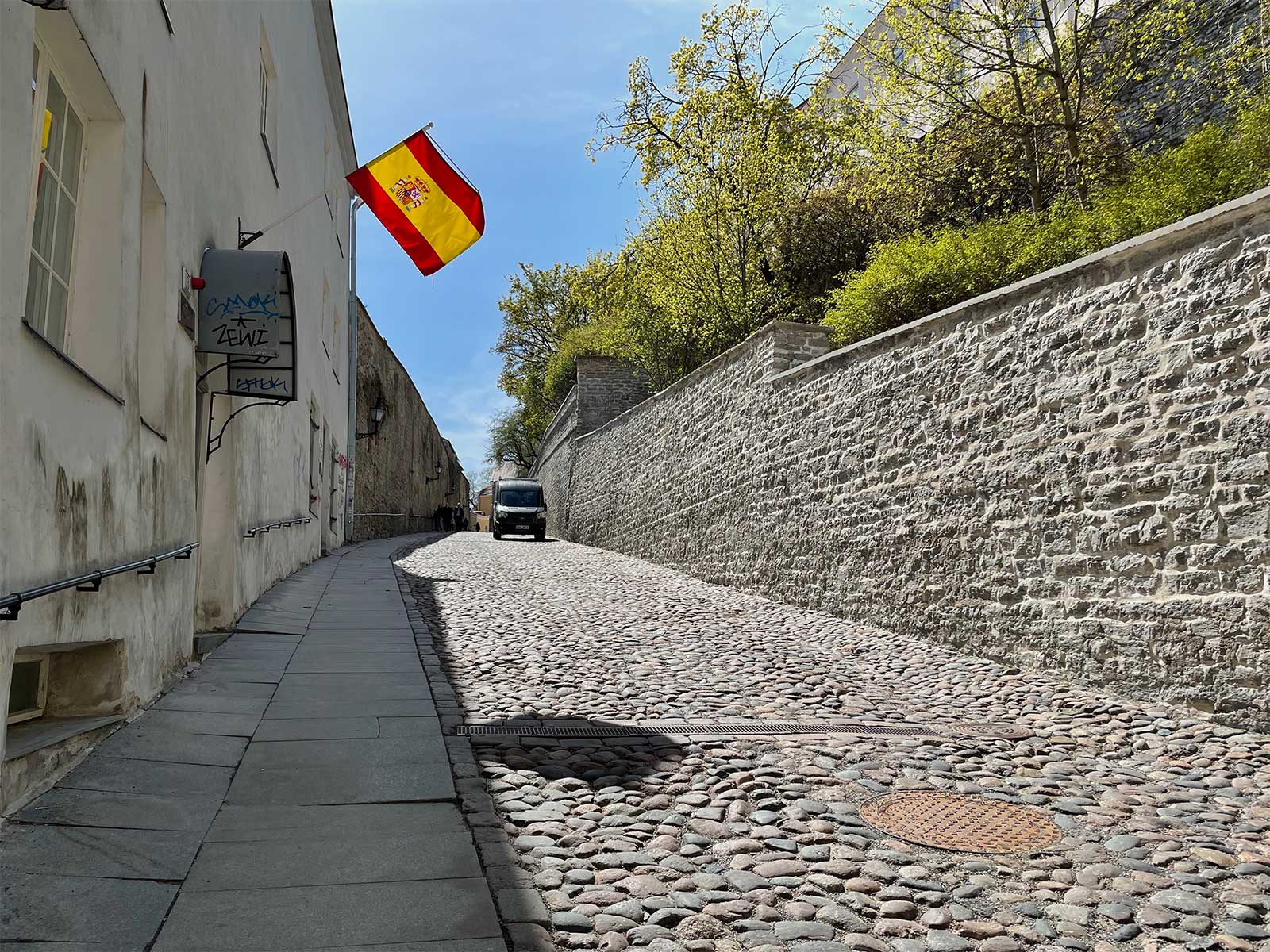
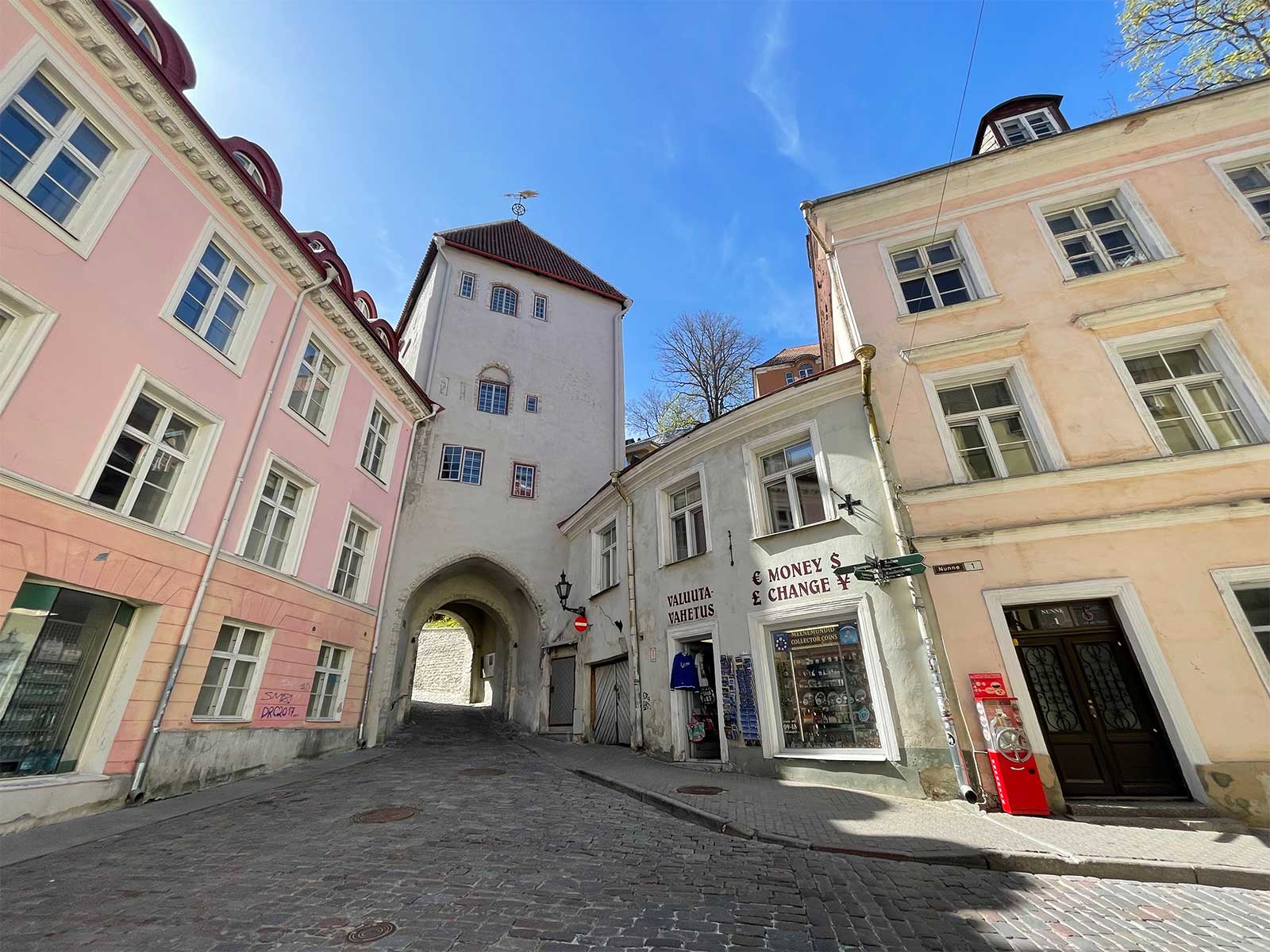
The slope of a few streets becomes very steep along the hillside, however my power wheelchair was able to manage the ascent. Manual wheelchair users will face significant difficulty in a few places, perhaps making it difficult to reach sights like the Toompea Castle and the Alexander Nevsky Cathedral.
Pathways, bike lanes and quirky features
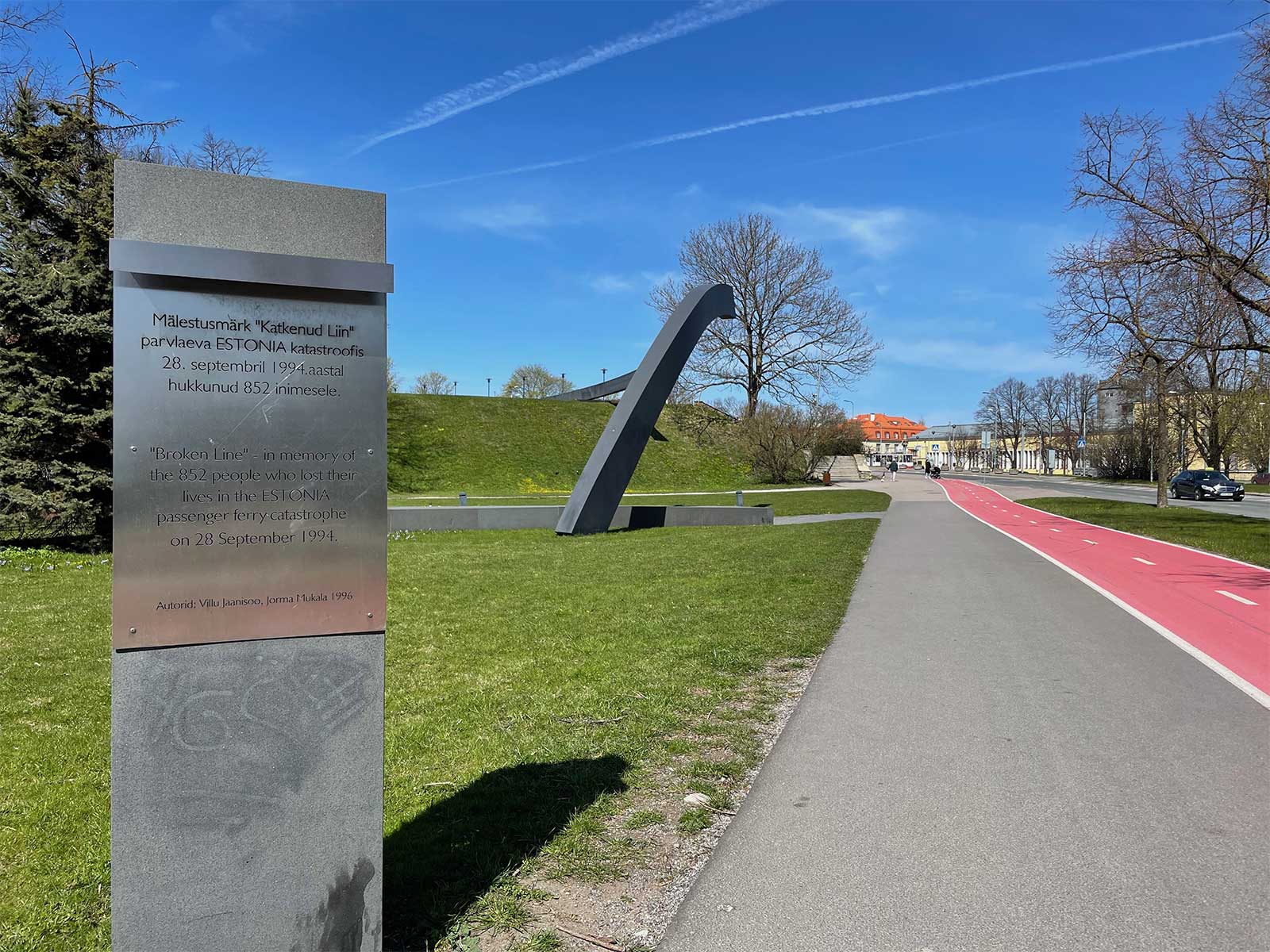
Outside of the city’s historic center, I discovered a slew of wheelchair-friendly sidewalks, asphalt paths and bicycle lanes. While the Old Town is the star of the show when it comes to tourist attractions, Tallinn has much more to offer than the destinations you’ll find in guidebooks.
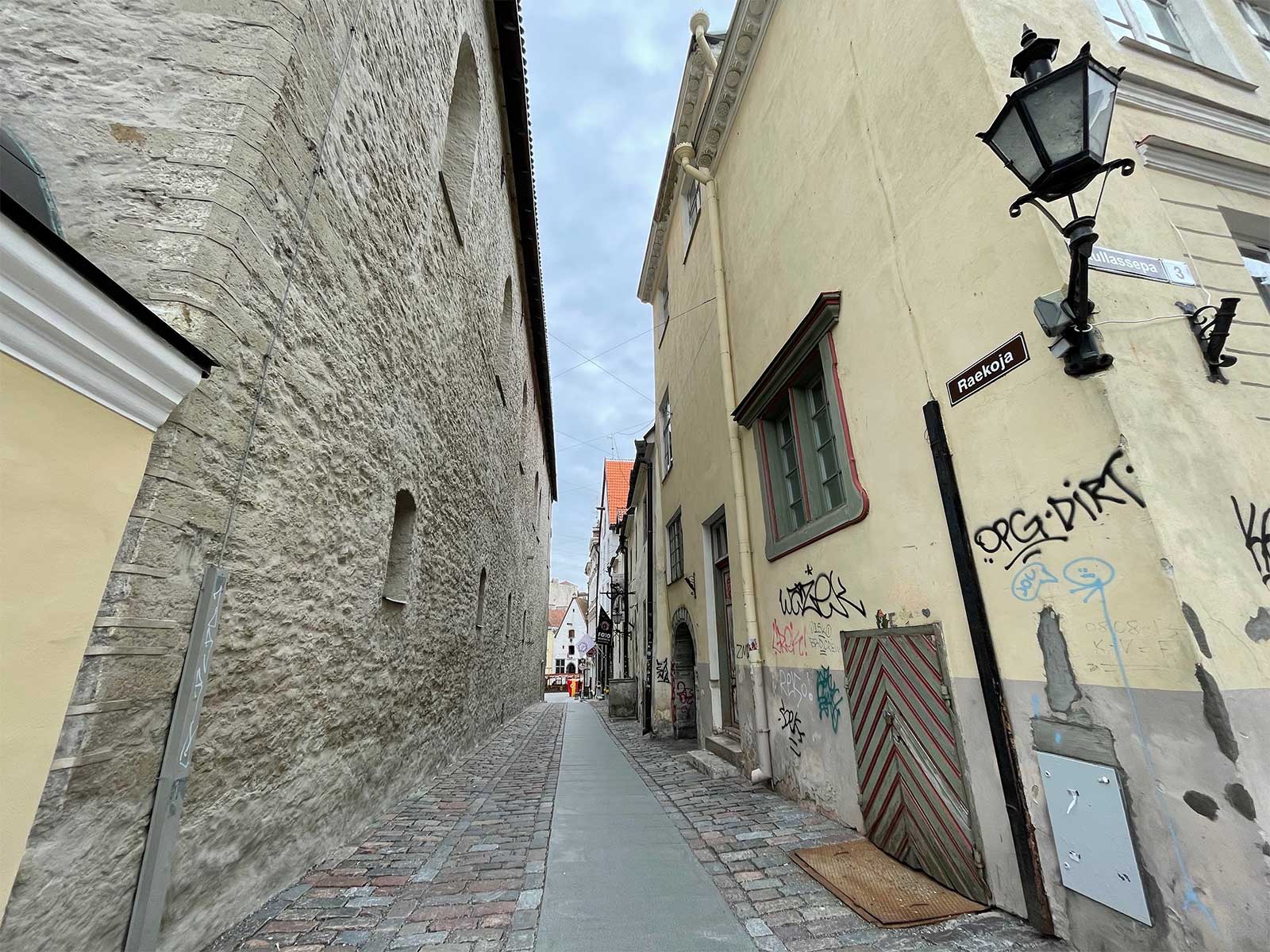
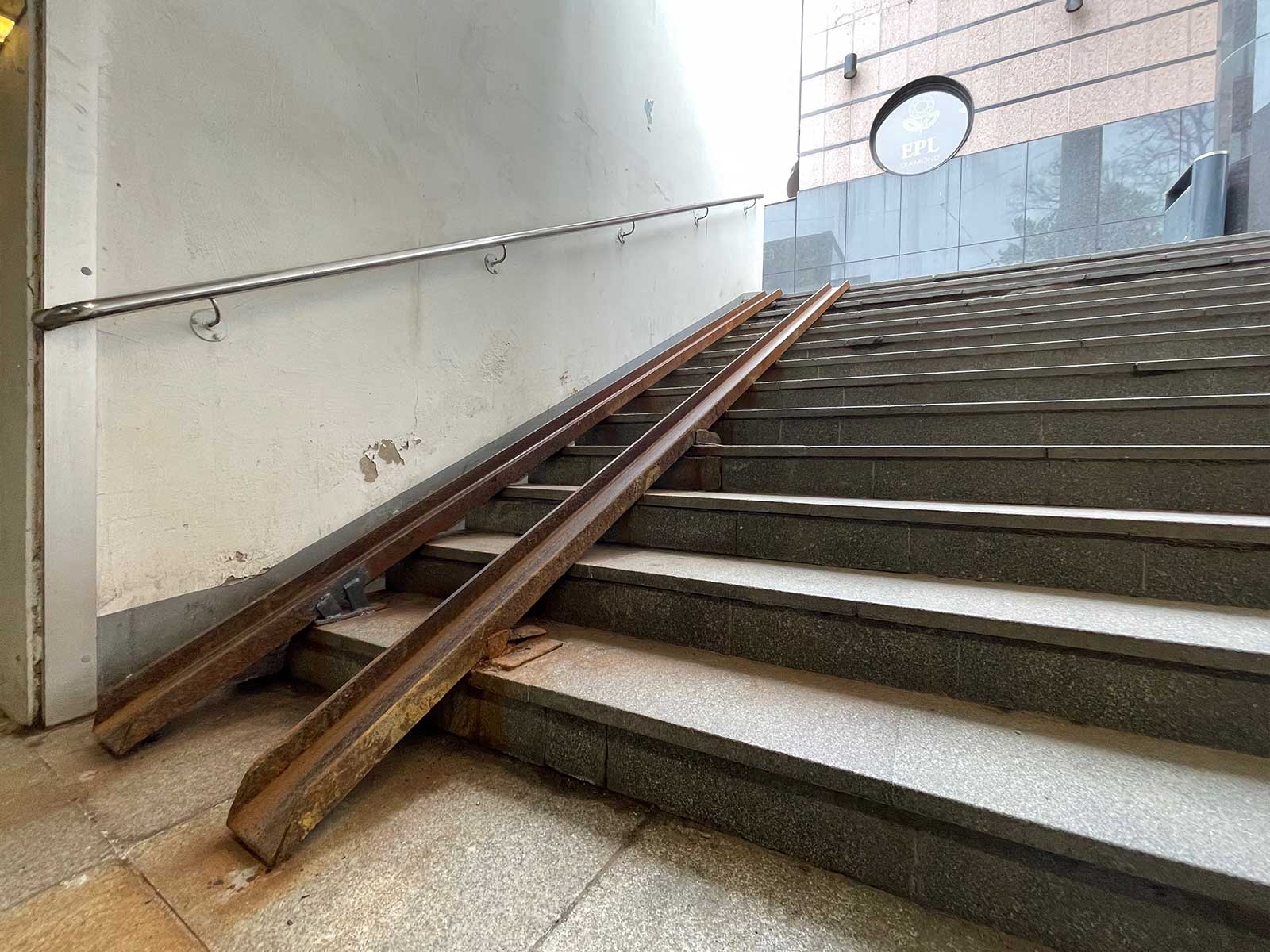
Some innovation is taking root in the historic center, though. I found quite a few streets where cement pathways had been inlaid over the cobblestone streets — balancing the need for accessibility with the community’s interest in preserving its historic streets. It is possible to achieve both!
One quirky feature that appears frequently in Eastern Europe are Soviet-era stair ramps — metal wheel tracks installed on a staircase. These are rarely accessible to wheelchairs and are often much steeper than the city’s steepest streets. If you do try to navigate one of these (not recommended), do so with extreme care and with another person to help you up or down.
Many businesses in Tallinn lack barrier-free access due to steps at the entrance, making it a destination where you would benefit from bringing your own ramp. Check out my list of the 6 Best Portable Wheelchair Ramps for Accessible Travel.
Final Thoughts
I spent a lot of time exploring Tallinn in my power wheelchair — I rolled up and down the streets, took on the cobblestone pathways, and plotted my course to all of the city’s top attractions. I rolled through almost every part of its Old Town and explored the city’s incredible history.
Power wheelchairs make getting around easier and I know that my trip would have been much less enjoyable without it. It’s difficult, often uncomfortable to wheel on cobblestone — but it would be much more difficult in a manual wheelchair. I encourage disabled travelers to plan a trip to Tallinn, but you might be wise to plan a course in advance — using the city’s map of sidewalk accessibility, or by viewing images from Google Street View. It’s no doubt possible to enjoy this great capital city, but it will be much more enjoyable if you start with a plan — then see where your curiosity takes you!



